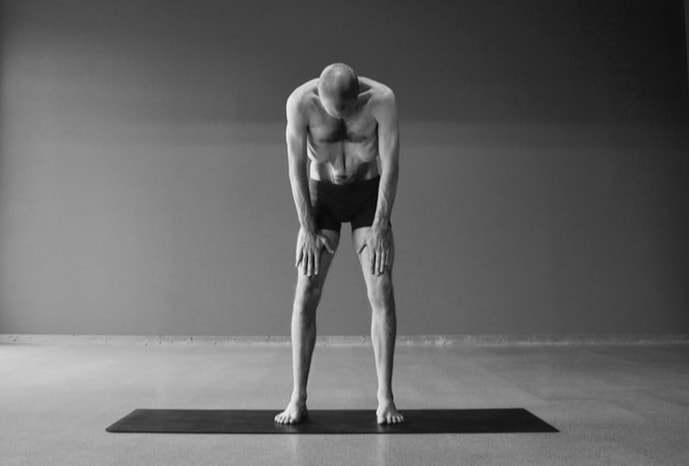|
Learning to control the breath separately from muscular engagements is the beginning of profound mental change that propels us beyond the practices of asana.
The practice of Nauli accomplishes 5 important things: 1) It strengthens and balances the abdominal muscles. It reveals and slowly heals imbalances of the rectus abdominis (6-pack), and awakens the transverse abdominis—the large but often ignored muscle vital for breathing, holding the intestines and organs in, and supporting the spine. 2) The thoracic (chest) vacuum reduces the pressure in the intestines, stomach and rectum, encouraging movement and improving digestion and elimination. This also helps prevent prolapse of the organs and rectum. 3) The suction of the abdomen into the chest cavity improves the relaxation and range of motion of the diaphragm, our main muscle of breathing that is difficult to access through other exercises. 4) External breath retention (holding the breath out) stimulates the parasympathetic nervous system, lowering the heart rate and stimulating digestion, relaxation and immune function. 5) It refines the control of our nervous system, teaching us to separate the muscles of breathing from the in- and out-flow of air. The first four stages of Nauli are: 1. 4-Part Breath 2. Uddiyana 3. Agni Sara 4. Engagement of the rectus abdominis It is important to have good control over each stage before progressing to the next, as each stage is built on the previous ones. NOTE Nauli is best practiced first thing in the morning, before eating and after emptying the bowels. The emptier the stomach and intestines, the more comfortable and effective Nauli will be. This is an excerpt from the Advanced 1 Practice Manual.
0 Comments
Leave a Reply. |
AUTHORSScott & Ida are Yoga Acharyas (Masters of Yoga). They are scholars as well as practitioners of yogic postures, breath control and meditation. They are the head teachers of Ghosh Yoga.
POPULAR- The 113 Postures of Ghosh Yoga
- Make the Hamstrings Strong, Not Long - Understanding Chair Posture - Lock the Knee History - It Doesn't Matter If Your Head Is On Your Knee - Bow Pose (Dhanurasana) - 5 Reasons To Backbend - Origins of Standing Bow - The Traditional Yoga In Bikram's Class - What About the Women?! - Through Bishnu's Eyes - Why Teaching Is Not a Personal Practice Categories
All
Archives
May 2024
|







 RSS Feed
RSS Feed